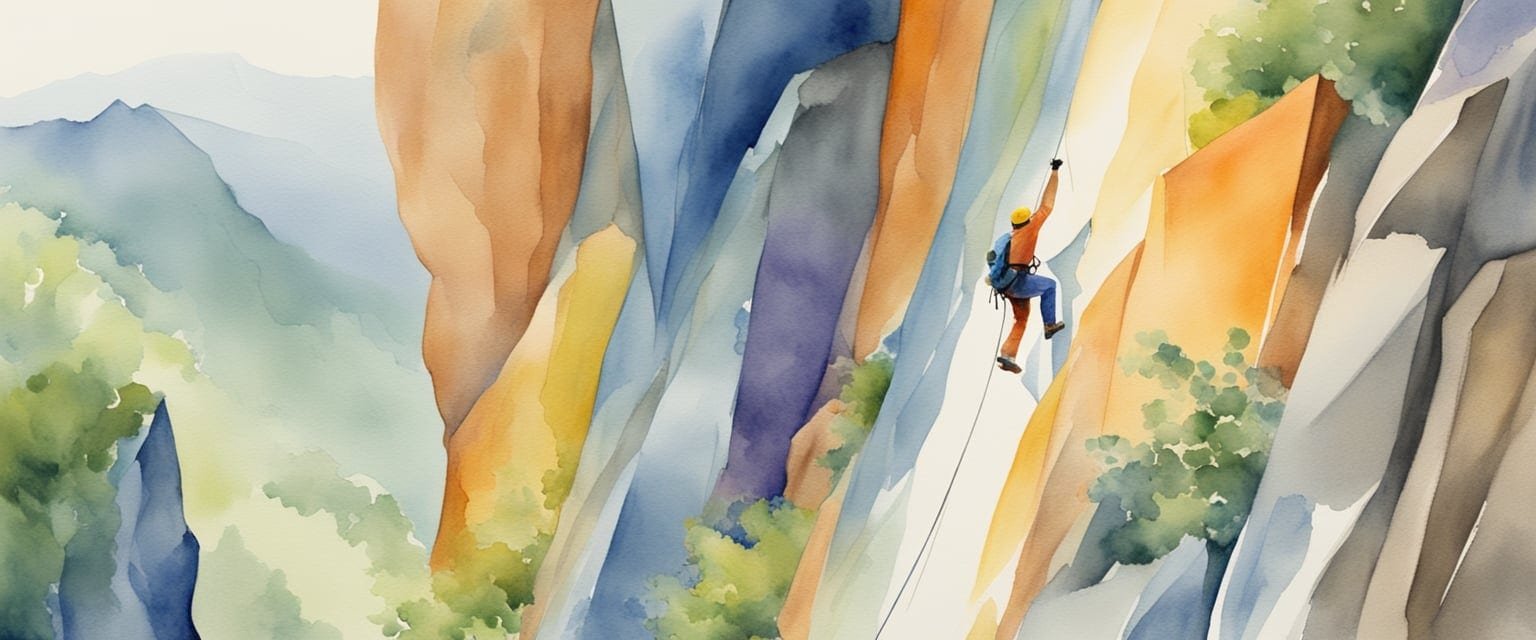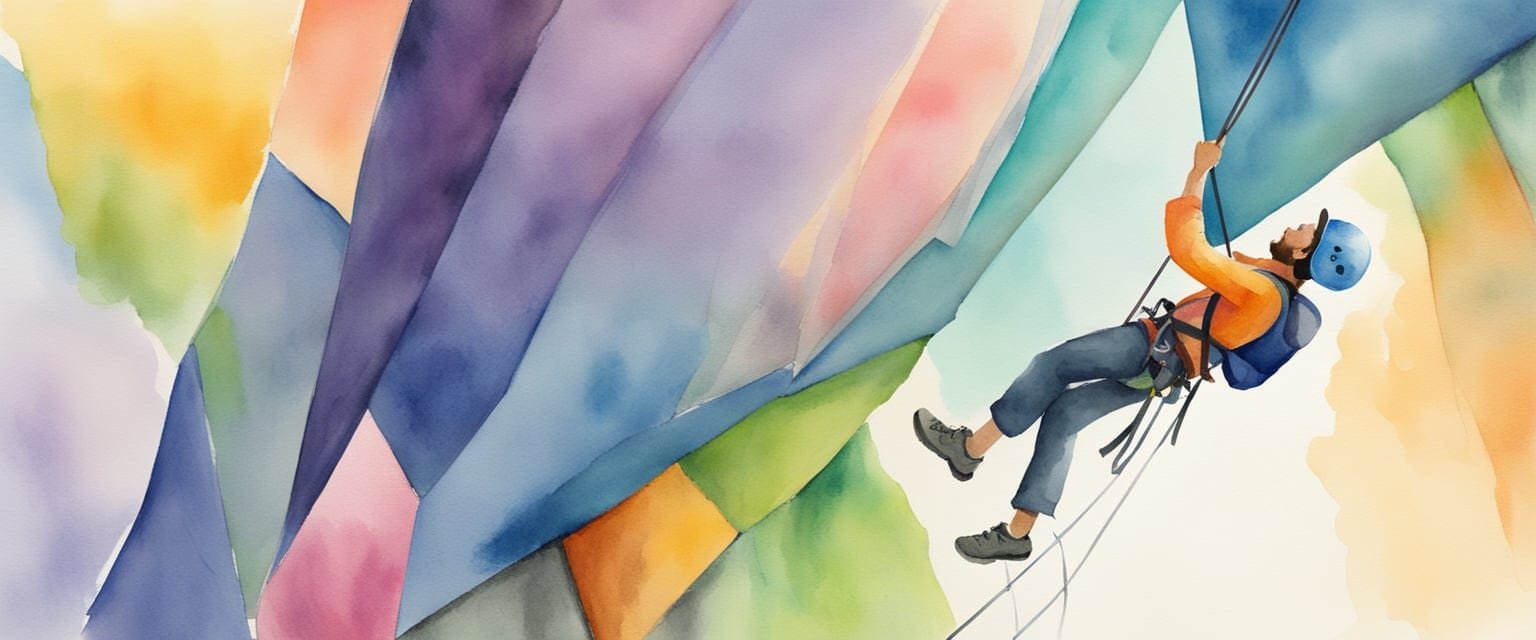Sport climbing made its Olympic debut at the Tokyo 2020 Games and quickly captured the attention of fans worldwide. In this ultimate guide to Olympic Sport Climbing, I will break down everything you need to know about this exciting sport, including its disciplines, rules, and some of the top athletes to watch out for. Whether you’re a newcomer or a seasoned fan, there’s always more to explore in the world of climbing.

As sport climbing returns for the Paris 2024 Olympics, I am eager to share insights into the unique challenges and techniques that climbers face. From the speed and precision needed in competitions to the intense training regimens athletes undergo, I will cover all the essential information. You’ll learn how scoring works and what makes this sport so thrilling to watch.
Join me as we climb to new heights and uncover what sets Olympic Sport Climbing apart from other sports. You’ll find valuable tips and fun facts that will enhance your viewing experience and appreciation for the athletes who push their limits in the pursuit of Olympic glory.
Key Takeaways
- Sport climbing combines speed, difficulty, and bouldering into competitive events.
- Understanding the scoring and rules can make watching competitions more exciting.
- The climbing community continues to grow, attracting more athletes and fans each year.
The Basics of Olympic Sport Climbing

I find Olympic sport climbing to be an exciting and dynamic sport. It includes three main disciplines: lead, boulder, and speed. Each discipline requires different skills and equipment, which I’ll cover in detail.
Understanding the Sport
Sport climbing takes place on artificial walls made of various materials. The walls have different angles and features, providing challenges for climbers.
The three disciplines are:
- Lead: Climbers ascend a tall wall using a rope for safety. They clip into anchors while climbing.
- Boulder: This involves shorter walls, generally up to 20 feet. Climbers use crash pads for safety instead of ropes.
- Speed: In this race against time, climbers try to reach the top of a standardized wall in the fastest way possible.
Each discipline showcases unique skills, from strength to strategy.
Key Terms and Equipment
In sport climbing, understanding the equipment is crucial. Here are some important terms:
- Rope: A dynamic rope is used in lead climbing for safety.
- Belay: This is the method of controlling the rope for safety while someone is climbing.
- Carabiners: These are metal clips used to secure the rope to anchors.
- Climbing Shoes: Specially designed for grip, these shoes help climbers perform better on the wall.
Climbers also use various types of holds, which are the features of the wall that they grip. My favorite part is figuring out the routes and using the right gear to conquer each challenge.
Climbing Disciplines Explained
In Olympic sport climbing, there are three main disciplines that each test different skills and techniques. Let’s break down lead climbing, bouldering, and speed climbing.
Lead Climbing
In lead climbing, I ascend a 15-meter wall while clipping into pre-placed bolts along the route. This type of climbing requires both strength and strategy. I must carefully choose my moves to conserve energy and avoid falling.
Competitors are scored based on how high they reach, with falls happening often due to challenging holds. During competitions, if I fall, I return to the last clipped bolt. My goal is to climb as high as possible before time runs out. Understanding the route can help increase my success.
Bouldering
Bouldering involves climbing shorter walls without the use of ropes but requires crash pads and spotters for safety. The problems, or routes, are typically 4 to 5 meters high and focus on powerful moves and dynamic techniques.
In competitions, I tackle a set number of boulder problems within a time limit. Scoring is based on how many problems I complete and how many attempts it takes. Effective problem-solving and physical strength are key in this discipline, making it an exciting test of skill.
Speed Climbing
Speed climbing is all about time. I race up a standardized 15-meter wall against another climber. The thrill begins when both of us start on the sound of a buzzer. It’s a test of speed and agility, where I must have quick moves and a strong start.
Athletes ascend in parallel lanes, and the winner is determined by who reaches the top first. Speed climbing requires excellent technique and mental focus. Unlike the combined event that includes other disciplines, this is dedicated just to speed. Competitors aim to complete the climb in the fastest time possible.
By exploring these disciplines, I gain a better appreciation for the diverse skills required in Olympic sport climbing.
Rules and Scoring
In Olympic Sport Climbing, understanding the rules and scoring system is essential for both athletes and spectators. This section outlines how points are awarded and what rules govern performances during competitions.
How Scoring Works
Scoring in sport climbing is based on the highest holds reached by an athlete. Points are assigned as follows:
- Highest 10 holds (40-31): 4 points each
- Previous 10 holds (30-21): 3 points each
- Previous 10 holds (20-11): 2 points each
- Lowest 10 holds (10-1): 1 point each
If a climber makes a failed attempt but reaches for the next hold, they can earn 0.01 points. Additionally, if a competitor completes the climb without falling, it is called a “flash.” The overall score determines rankings, with the highest total points earning a medal.
Understanding the Rules
There are several important rules in Olympic climbing that athletes must follow. First, a false start occurs if a climber begins before the signal, resulting in penalties. Each route has specific checkpoints where climbers must reach a minimum hold.
During the competition, athletes are observed closely to ensure adherence to these rules. If they fail to follow a rule, it can lead to disqualification. Athletes aim not only for points but also to break world records set in previous events. Understanding these aspects helps me appreciate the sport more deeply.
Athletes and Competitions

Sport climbing showcases amazing talent and determination. Many athletes dedicate years to perfecting their skills. The competitions are intense and exciting, attracting fans worldwide.
Famous Climbers to Know
When I think of top climbers, a few names stand out. Janja Garnbret is a true superstar in the sport. Known for her incredible strength and technique, she has won multiple world championships and Olympic titles.
Shauna Coxsey is another remarkable athlete, making waves in competitions for her impressive bouldering skills. Then there’s Adam Ondra, hailed as one of the best male climbers. His achievements include both bouldering and sport climbing titles.
Don’t forget Akiyo Noguchi and Miho Nonaka, who have also made their mark in competitions. Jakob Schubert is another notable name, known for his versatility. Lastly, Alberto Gines Lopez won gold at the Tokyo 2020 Olympics, showing the world his talent.
Major Climbing Competitions
In sport climbing, competitions are structured in different stages: qualifications, semifinals, and finals. Athletes compete to secure a spot in the finals based on their performance in the earlier rounds.
Events like the IFSC World Championships and the Olympics are highlight competitions. During these events, climbers showcase their skills and fight for medals. The Olympic format features separate competitions for Speed and Boulder & Lead, allowing for more exciting medal opportunities.
The atmosphere during finals is electric. Fans cheer for their favorite climbers, creating an unforgettable experience. Every competition brings new talent, making it thrilling to watch who will take the title.
Training and Techniques
Training for Olympic sport climbing requires a mix of strength, endurance, and mental skills. I focus on specific techniques to improve my climbing performance and prepare for challenging routes.
Building Strength and Endurance
To climb at a high level, I must build both strength and endurance. Key areas to focus on include finger strength, core stability, and overall body power.
I often perform exercises such as:
- Pull-ups: Great for upper body strength.
- Plank Holds: Builds core stability.
- Campus Board Training: Improves explosive power and finger strength.
Additionally, endurance is crucial for longer routes. I incorporate interval training sessions on the wall. This means climbing at a steady pace for a specified time, then resting briefly before repeating the climb.
When tackling overhangs, developing strength is vital. The angles can be demanding, requiring not just power but also excellent balance and body positioning.
Strategies and Mental Preparation
Mental preparation plays a huge role in sport climbing. I work on strategies to enhance my focus and reduce anxiety during competition.
Visualization techniques help me imagine successful climbs. This practice allows me to mentally rehearse each move and develop confidence. I see every hold and sequence, which prepares my mind for the real challenge.
I also practice mindfulness during training sessions. Staying present helps me manage stress and improve my decision-making on complex routes. By combining mental skills with physical training, I develop a holistic approach.
Balancing preparation with physical skills allows me to face any climbing challenge confidently.
The Climbing Community and Its Growth

The climbing community has seen significant changes, especially with its introduction to the Olympics. This evolution has broadened the appeal of the sport and created a more robust global following.
Evolution of Climbing in the Olympics
I remember how exciting it was when sport climbing debuted at the Tokyo Games. The event featured 40 athletes—20 men and 20 women—competing for two gold medals. The combination of disciplines like lead climbing, bouldering, and speed climbing showcased the athletes’ diverse skills.
In Paris 2024, this will expand to 68 athletes competing for four gold medals, increasing interest and participation. The International Federation of Sport Climbing has been vital in promoting climbing as an Olympic sport. This exposure has encouraged more urban sports facilities, making climbing accessible to more people.
Sports Climbing’s Global Reception
The reception of sport climbing worldwide has been overwhelmingly positive. Countries like Great Britain and the United States are investing more in training programs and facilities. For instance, the Aomi Urban Sports Park in Tokyo served as a fantastic venue, attracting new fans and inspiring future climbers.
Social media has played a key role in this growth. Climbing videos and competitions reach a broad audience, showcasing thrilling climbing events. This visibility has led to greater participation rates, especially among younger generations, who find the challenges exciting and unique.
Additional Climbing Disciplines

Climbing includes various disciplines beyond the Olympic events. Here, I will share insights on traditional climbing, free climbing, and ice climbing, each offering unique challenges and techniques.
Traditional Climbing Explained
Traditional climbing, or “trad” climbing, focuses on placing gear in the rock for protection. Unlike sport climbing, where fixed anchors are pre-placed, I use removable gear, like cams and nuts, that I place as I ascend.
This discipline requires a good understanding of rock features. I evaluate the rock quality and select the right gear to protect myself.
Climbers often use the Yosemite Decimal System to rate the difficulty of routes. This system helps me gauge the challenge, from simple hikes to advanced climbs. The experience of climbing trad may bring a sense of adventure, isolation, and personal achievement.
Free Climbing and Its Variants
Free climbing is when I climb without using ropes for support on the rock face. However, I still use ropes for safety. This discipline includes techniques like bouldering and sport climbing.
I enjoy bouldering, which focuses on shorter climbs, usually under 20 feet, without ropes. For this, I use crash pads below me for safety.
In sport climbing, I rely on fixed anchors placed along the route. As I ascend, I clip my rope to these anchors for protection. Each variant in free climbing emphasizes strength, technique, and quick decision-making.
Ice Climbing and Mountaineering
Ice climbing is a thrilling form where I ascend frozen waterfalls or ice formations using specialized tools like ice axes and crampons. This adds an extra layer of challenge as I deal with constantly changing conditions.
Mountaineering combines rock climbing and hiking to summit peaks. I often encounter a mix of terrain, from ice to rock. Understanding climbing grades and techniques is crucial for safety.
In both disciplines, preparation is key. I always check weather conditions and ensure I have the right gear. The thrill of reaching a summit or climbing an ice wall is a unique experience for any climber.
Beyond the Wall
As I explore Olympic sport climbing, I get excited about how it connects with other urban sports and what the future holds for this thrilling activity. Both aspects highlight the growing popularity of climbing and its relationship with fitness and lifestyle.
Incorporating Other Urban Sports
Urban sports like karate, skateboarding, and surfing are reshaping how we view physical activity. They promote not just competition but also community and creativity.
I believe that sport climbing can blend with these disciplines, encouraging people to try new challenges. For example, skateboarding’s dynamic movements can inspire climbing techniques. This crossover can help attract a wider audience, especially among the youth looking for a fun and active lifestyle.
Many climbing gyms now incorporate elements from other urban sports, allowing participants to experience a variety of activities. These spaces often include ropes for climbing, ramps for skating, and areas for martial arts, creating a holistic fitness environment. This encourages people to stay active while discovering which sport resonates with them.
Future of Olympic Climbing
The Olympic future of climbing looks bright. With the inclusion of speed climbing alongside bouldering and lead events, I’m excited to see how athletes will adapt their training methods. The observation period during competitions will allow me to witness how climbers strategize their performances.
As this sport continues to evolve, I see potential for new events and challenges. The Tokyo 2020 games marked the beginning, but Paris 2024 will increase the visibility of climbing on an even larger stage.
I imagine more young athletes will be inspired to take up climbing, not just for competition, but for its inherent fitness benefits. The community aspect will grow too, as more gyms pop up, welcoming enthusiasts and newcomers alike. The climbing lifestyle is more than just a sport; it’s a way to connect with others and stay healthy.
Frequently Asked Questions

I often get questions about Olympic sport climbing and its various aspects. It’s a fascinating sport with unique challenges, and I love sharing what I know.
What are the main disciplines of sport climbing in the Olympics?
The main disciplines in Olympic sport climbing are bouldering, lead climbing, and speed climbing. In Paris 2024, athletes will compete in a combined format for bouldering and lead events, while speed climbing will be a separate competition. This setup showcases different skills and techniques.
How does the scoring system work in Olympic sport climbing competitions?
In Olympic competitions, the scoring system is based on the holds climbed. The highest 10 holds earn 4 points each, while the next 10 hold 3 points each, and so on. If a climber attempts a hold but fails, they receive .01 points. This system adds excitement to the competition.
Can you explain the difference between bouldering, lead climbing, and speed climbing?
Bouldering involves climbing short walls without harnesses, focusing on strength and problem-solving. Lead climbing requires athletes to climb taller walls while securing themselves with ropes, testing endurance and strategy. Speed climbing is about racing up a standardized wall as quickly as possible, emphasizing speed and agility.
Which athletes should we watch out for in the 2024 Olympic climbing events?
Some standout athletes are expected to shine in the 2024 Olympics. I’ll keep an eye on climbers who have performed well in recent competitions. Emerging talents might also surprise us, adding excitement to the events.
What are the qualifications needed to compete in Olympic sport climbing?
To compete in Olympic sport climbing, athletes must go through a series of qualification events. These events determine their ranking and eligibility based on performance. Countries can send a limited number of athletes, adding to the competitive nature of the sport.
How has sport climbing evolved since its introduction to the Olympic Games?
Since making its debut at the Tokyo 2020 Olympics, sport climbing has grown in popularity and visibility. The format and rules have been refined, while new talent continues to emerge. This evolution reflects the sport’s dynamic nature and its appeal to a global audience.

